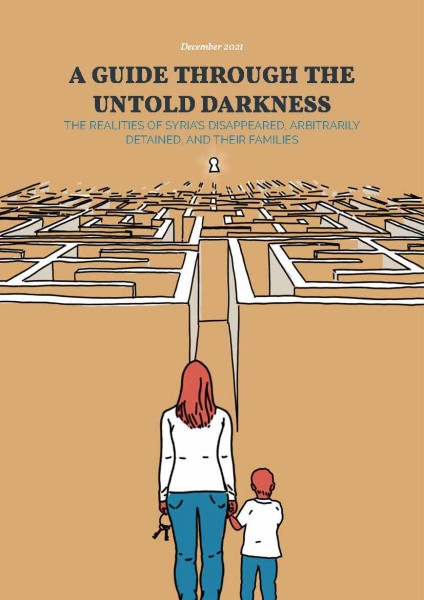We work side by side with victims to obtain acknowledgment and redress for massive human rights violations, hold those responsible to account, reform and build democratic institutions, and prevent the recurrence of violence or repression.
A Guide Through the Untold Darkness: The Realities of Syria’s Disappeared, Arbitrarily Detained, and Their Families
Enforced disappearance and arbitrary detention devastate victims and all those who love them. This guide takes an unsparing look at the harsh realities that Syrian victims of these crimes face and offers guidance on what they and others can do to help. It is the product of the Bridges of Truth project, a collaboration led by eight Syrian civil society organizations and ICTJ to raise awareness about the plight of detainees and the disappeared in Syria and their families.

Since 2011, tens of thousands of individuals in Syria have been taken into custody by the regime, its allies, or non-state armed groups, and never heard from again. Many are likely dead: victims of extrajudicial killings, torture, or of inhumane detention conditions. For the few who are still alive but are held incommunicado, there is little prospect of release. And for their loved ones waiting upon their return, there is no easy way to get answers about their whereabouts or fate, nor to navigate the enormous emotional and bureaucratic challenges that being a victim of enforced disappearance and arbitrary detention imposes.
The lives of each of these victims and their families have been forever changed, often by physical injuries, trauma, economic loss, and serious impairment of other fundamental rights.
This guide—a joint project of ICTJ and eight Syrian civil society organizations—aims to prepare victims and their loved ones for the difficulties they may experience as they work to rebuild their lives and navigate the many bureaucratic systems set up by the regime and others that stand in their way. It draws from a variety of sources, including the authoring organizations’ longstanding work on Syria and engagement with Syrian victims, collected testimonies and focus group discussions, and in-depth analysis.
This guide takes the reader on a journey alongside the victim’s loved ones, from the moment of the disappearance—and the frantic hunt for answers—to the painful process of obtaining a death certificate, settling the missing person's affairs, obtaining essential civil documentation, and moving on with their lives. Each chapter tackles different obstacles that victims and their families will likely encounter. Each one concludes by recommending steps that Syrian stakeholders and the international community should take to support families and to help mitigate the currently insurmountable hurdles facing all who are affected. This includes recommendations for the Syrian regime with the full understanding that it clearly has no interest in upholding human rights, respecting its obligations under international law, or protecting its people.
Although the guide makes for hard reading, it offers victims and all those who desire to help them a comprehensive resource for understanding what is needed and what can be done to help.